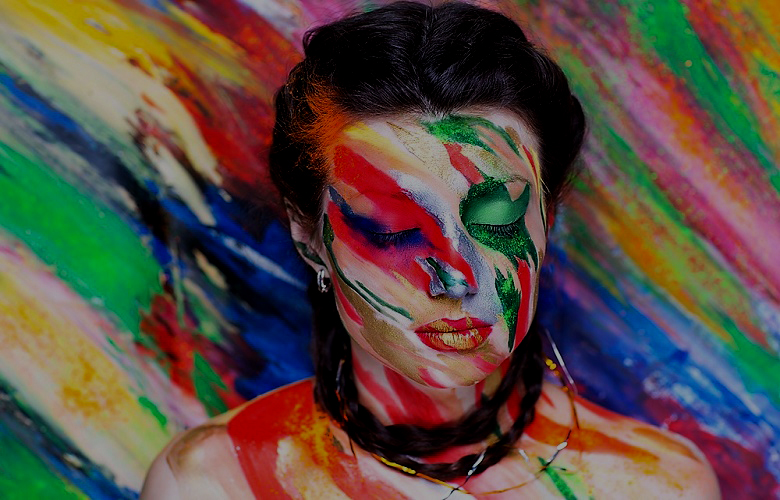
Over the last few weeks, the artistic world has been making headlines, the question has been raised – how far is too far? Art, by its very nature is meant to push people beyond their comfort zone and make people think. This can be a very confronting and is not always welcomed. When does art cross the line from confronting and thought provoking to outright offensive and detrimental? Who gets to decide where this line is?
The first was an art installation piece featured at the Sculpture Garden of the Walker Art Center in Minneapolis, Minnesota. The piece was called Scaffold and involved the creation of a gallows that was inspired by the gallows used at a mass hanging of 38 Dakota Indians in 1862. The piece was meant to be seen as a statement on the history of the death penalty in relation to marginalized peoples, and was intended to start a conversation about said history as well as what type of future people wanted. However, that aim was lost, due to the fact that this section of history still painfully resonates for many members of the community.
The artist – Sam Durant – had featured Scaffold successfully in another sculpture park in Europe in the years prior, but by relocating the piece to a location with a different history, the piece bore new significance and crossed that line from acceptable to unacceptable. The piece was later dismantled and destroyed, at the agreement of the artist, Durant, the Walker Art Center, Minneapolis Park and Recreation Board and, importantly, representatives from the Dakota Spiritual and Traditional Elders as well as representatives from the four federally recognized Dakota tribes.
The initial news report that caught my eye.
Statement released by Sam Durant.
Coverage of the agreement to dismantle Scaffold.
The second piece made a slightly larger splash – the piece by Kathy Griffin and Tyler Shields, a photograph where Griffin is holding the (fake) decapitated head of current President of the United States, Donald Trump. Both Griffin and Shields are known for pushing the envelope of civility to shock people, so that the two of them produced this kind of piece is not surprising. The aim of the piece, according to Griffin, was to draw an allusion to President Trump’s infamous comment about ex-Fox news presenter, Megyn Kelly “You could see there was blood coming out of her eyes. Blood coming out of her wherever.” The piece was decried as disrespectful, accused of inciting violence and denounced as emulating and praising terrorist beheadings. Kathy Griffin went on to apologise for the piece, after suffering harsh consequences including the loss of multiple job opportunities.
Coverage of the fallout from the photo.
The third piece is the most recent of the three, hitting headlines mere days before writing this piece. The annual New York City festival Shakespeare in the Park has seen New York City’s Public Theatre mount a production of Julius Caesar, famously written by William Shakespeare. What caught the eye of the world at large and set the cat among the proverbial pigeons was the fact that the character of Julius bears a striking resemblance to President Trump and he is then assassinated by a council made up of women and racial minorities.
Critics of the play declared that the creatives behind this decision were actively depicting an assassination of the President, implying that the play itself was not just condoning that action, but actively inciting it. It was also derided as an outright political callout, with many of the critics implying that that type of statement has no place in theatre. As a result, two major sponsors pulled their funding – Delta Airlines, who in an emailed statement stated that the “graphic staging” had “crossed the line on the standards of good taste,” and Bank of America who released the statement on Twitter featured below.
Interview with Director Oskar Eustis.
Review of the production by Variety.
Article regarding the fall out of the message.
Let’s break this down: three different pieces that all seem to have crossed that invisible line that society creates deeming what is suitable and what is not. Though, maybe suitable is the wrong word, maybe palatable is a more accurate description? I digress.
In the case of Scaffold, I feel that this is an example of artists needing to be more aware of the impact historical events have on the victims still living today. Around the same time Scaffold was being discussed and debated, in another part of America, statues venerating Confederate leaders from the Civil War were being removed from New Orleans. This was another hot button topic with half of the community wanting to keep these pieces of history alive and well in their city while for the other half of the community, these statues represented and painful and horrific part of their ancestry. Should we be outright erasing both of these historical events from the world’s consciousness? I don’t believe this is true. Should we stop creating artworks that remind us of parts of history that we would rather not? I definitely don’t believe this is true.
I just think that in cases like this, we need to come up with different ways of presenting our art and pushing those boundaries. We don’t need to silence our voices, we just need to open our eyes and ears to the pain that is still living.
In regards to the Griffin/Shields photograph; do I think she went too far? No. I feel that President Trump has opened himself to this kind of reflection through his own controversial actions. Being a public official shouldn’t exclude you from critical assessment, if anything it should make it more important. Do I think the piece is good? Not at all. It opts for shock value at the cost of nuanced critique.
I think that the online bullying she fell victim to was out of line on all levels. Criticize the work, opt not to support her future work, but threatening murder and rape is unacceptable on a human decency level. Cyber bullying is a heinous act of cowardice and shouldn’t be tolerated by anyone. Nonetheless, the various companies that chose to terminate their contracts with Ms Griffin were within their rights. Ms Griffin would be representing their brand and a piece of this level of notoriety runs the risk of contradicting many companies’ core values. This is the flipside of controversy – push that envelope, but if you push someone too far, they will just walk away.
It is the audience’s right, they can choose not to purchase the art, they can choose not to support the work. I don’t; however, believe the audience has the right to silence the artist.
The artist should still create art that provokes thought and makes people venture out of their comfort zone, but we also have to be aware that the price of this type of art is consequences such as these.
As for the third scenario, this is an example of a knee-jerk reaction from people who have not even bothered to look beyond the surface. Yes, Julius Caesar’s resemblance to President Trump is undeniable, but that’s where the accuracy ends. Caesar is assassinated on stage. Anyone with a high school student’s comprehension of Shakespeare’s Julius Caesar knows that the entire point of the play is to weave a tale that shows that the violent and undemocratic removal of a despot, no matter how well-intentioned, ends in the demise of democracy itself.
It is a cautionary tale, advising against the very violence that the uninformed critics are claiming the production is glorifying. The accusation that this is a political critique, I feel, is accurate. The inference that this is a bad thing; however, is not. The production has done exactly what it should do as a piece of art – made people stop, think and discuss. Does it cross a line? No. It isn’t even a new concept. In 2012 the same company did another version of Julius Caesar where Caesar bore a remarkable resemblance to then President Obama. If criticism is to be made, it is for the company recycling old ideas. But hey, we all want to be green!
I think that is up to the individual consumer. As artists, if we are making controversial art, we need to be prepared to face harsh criticism, embrace self-reflection and growth, and realise that every piece we put out maybe that piece that ends our career, but should those challenges stop us from producing captivating and provocative pieces?
Not on your nelly!
Let’s Talk: What’s Harder, Stage Or Screen?


Annette Silva is a Wardrobe Assistant and has been working professionally in the performing arts for approximately 15 years. Annette fell into the backstage world of theatre largely due to her lack of interest in traditional sports – apparently, gymnastics and ballet weren’t “real” sports. Annette's music teacher asked her to join the school’s light and sound team in lieu of doing the compulsory weekly school sporting torture and she hasn’t looked back since. Annette went on to study Technical Production at university and there she found her niche in the land of costume. Since then, Annette has had the privilege of working across many different disciplines – opera, ballet, drama, circus and musicals to name a few – and across many different cities and countries. Annette fell in love with the industry and the people within it and thrives on the challenges each day brings.
Read Full Profile© 2021 TheatreArtLife. All rights reserved.

Thank you so much for reading, but you have now reached your free article limit for this month.
Our contributors are currently writing more articles for you to enjoy.
To keep reading, all you have to do is become a subscriber and then you can read unlimited articles anytime.
Your investment will help us continue to ignite connections across the globe in live entertainment and build this community for industry professionals.